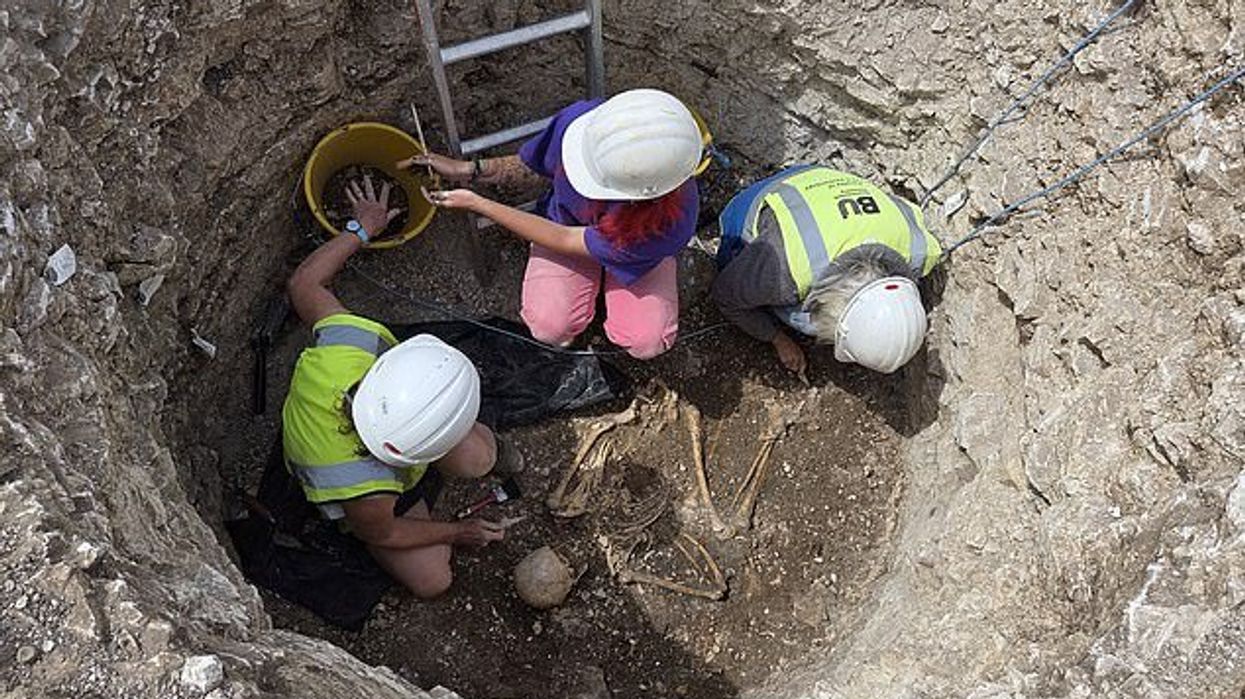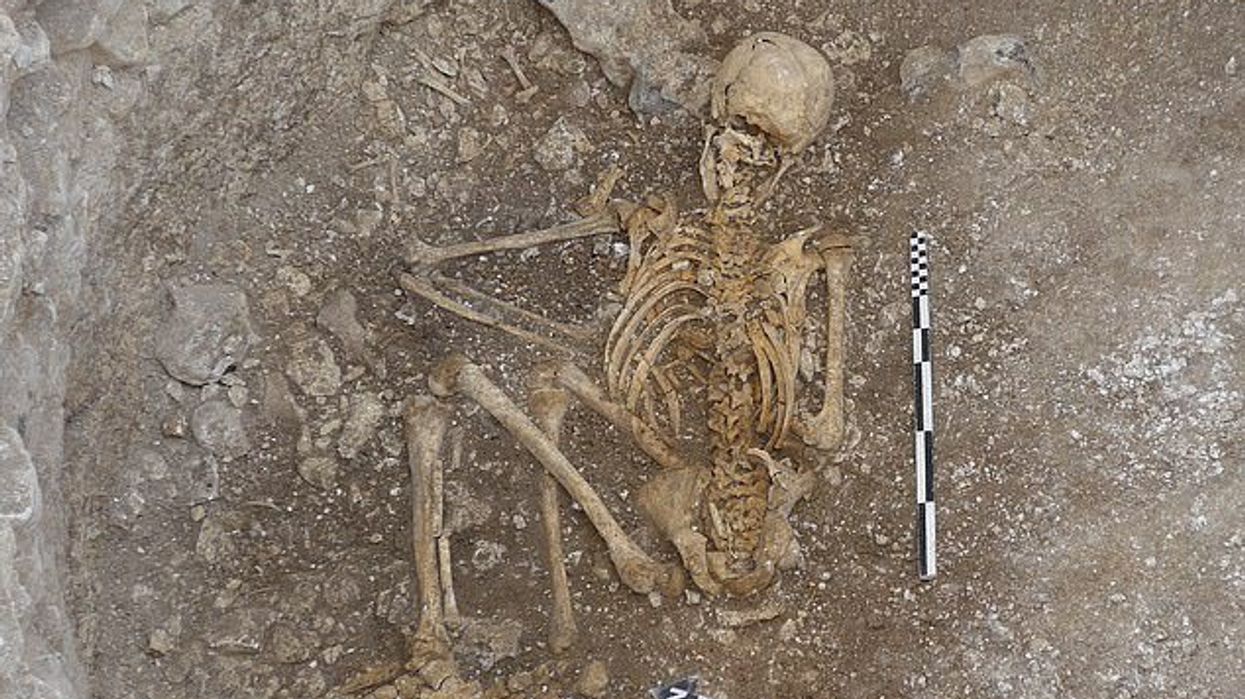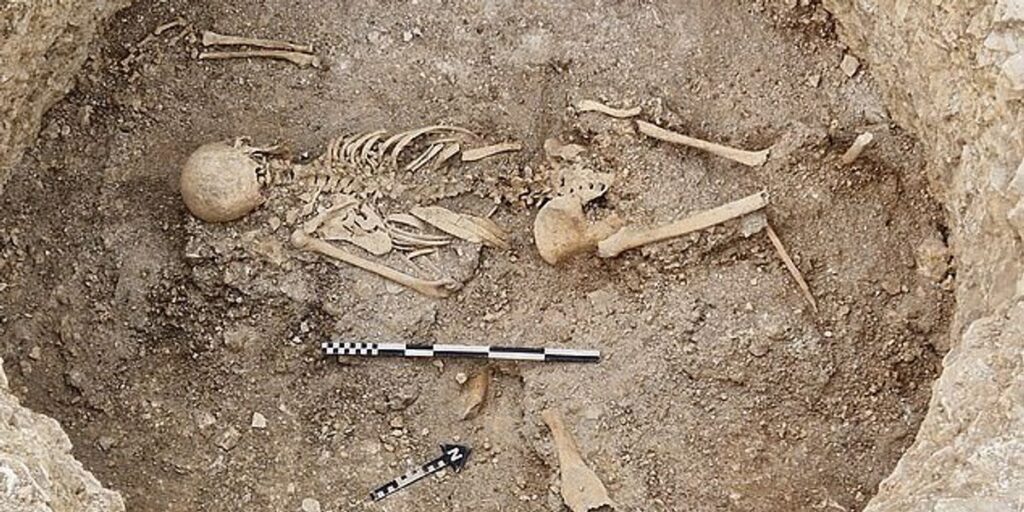Scientists have been left stunned after they discovered physical evidence of “theatrical” human sacrifices in Britain.
Written evidence of such sacrifices existed from both Ancient Greece and Ancient Rome, however, it is thought this is the first time physical evidence has been found.
Remains of a young adult woman have been found in Dorset at an Iron Age site dating back more than 2,000 years.
The woman’s skeleton was found to be lying face down on an artificially-constructed platform, and showed evidence of her throat having been cut.
The discovery took place at Winterborne Kingston, near Bere Regis at a site which was excavated over the course of five weeks by a team of staff and students from Bournemouth University and local volunteers.
Leading the team, Dr Miles Russell, principle academic in Prehistoric and Roman Archaeology at Bournemouth University, told the Daily Mail: “We’re seeing some individual who’s been executed in front of an audience.
“It’s been done in a very theatrical way.”
Discussing how the Romans wrote about such sacrifices, Dr Russell continued: “They disapproved of it.
The woman’s skeleton was found to be lying face down on an artificially-constructed platform
|
BOURNEMOUTH UNIVERSITY
“They were more than happy to do it for entertainment in the arena, but they didn’t like it for religious purposes – fantastically hypocritical, really.”
Previously, it was thought that any mention of such sacrifices in ancient texts was simply an effort by the Romans to demonise their enemies.
However, the discovery in Dorset has provided evidence to the contrary.
Dr Russell said: “It’s quite clear that there is actual evidence of human sacrifice.
ARCHAEOLOGY BREAKTHROUGHS – READ MORE:

The discovery was Mae by a group of staff and students from Bournemouth University alongside some local volunteers
|
BOURNEMOUTH UNIVERSITY
“Here we’re seeing some individual who’s been executed in front of an audience, thrown into a pit and then left to die.”
Researchers believe the woman, who was aged between 25 and 30 years old, had a very difficult life and her ribs had been broken around a month before she was killed.
At least two other skeletons have also been discovered in “exactly the same kind of condition”, suggesting multiple sacrifices.
Dr Russell said: “They died violently, thrown down on to an artificially-constructed platform.
“We’ve got a whole series of animal bones, collected together to create a flat platform at the bottom of the pit – and then the bodies have been thrown on top of that.”

The remains have been dated back to between 100BC and 50BC
|
BOURNEMOUTH UNIVERSITY
He added: “We know a lot about life in Britain after the Roman invasion.
“But we do not have anything written about life before, the answers to how they lived coming solely from what we find in the ground.
“So these discoveries are all the more significant.”
The remains, two of which have been dated between 100BC and 50BC, will be sent to Bournemouth and Dublin universities for more testing.


